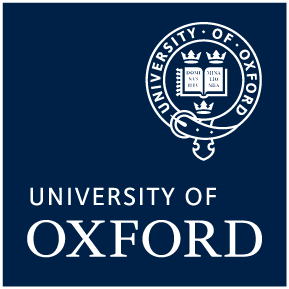 Research Associate in Computer Science
Research Associate in Computer ScienceI am currently a postdoctoral Research Associate in the Knowledge Representation and Reasoning (KRR) group at the Department of Computer Science, University of Oxford, where I also obtained my PhD (DPhil) degree. I am also visiting at CAMEL-AI.org. I will join Amazon Rufus as an Applied Scientist in 2025.
My research centers on Natural Language Processing, Knowledge Engineering, and Deep Learning, with a particular focus on rethinking how knowledge and reasoning are represented and leveraged in the era of large language models.

Action required
Problem: The current root path of this site is "baseurl ("_config.yml.
Solution: Please set the
baseurl in _config.yml to "News
Education
-
 University of OxfordOct 2020 - Sep 2024DPhil (PhD) in Computer Science Thesis: Language Models for Ontology Engineering [Link] Supervisor: Prof. Ian Horrocks, Prof. Bernardo Cuenca Grau, Dr Jiaoyan Chen Funding: Fully funded by Samsung Research UK
University of OxfordOct 2020 - Sep 2024DPhil (PhD) in Computer Science Thesis: Language Models for Ontology Engineering [Link] Supervisor: Prof. Ian Horrocks, Prof. Bernardo Cuenca Grau, Dr Jiaoyan Chen Funding: Fully funded by Samsung Research UK -
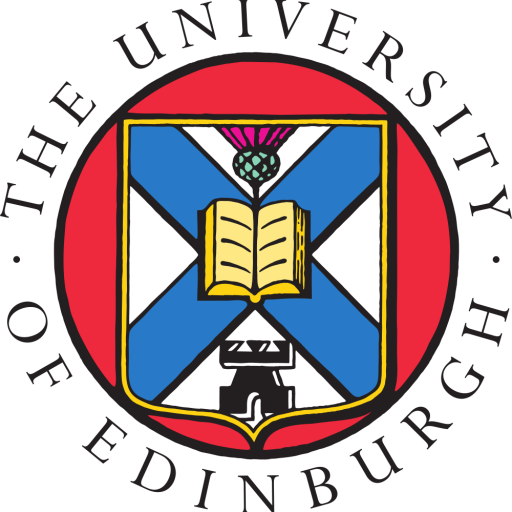 University of EdinburghSep 2016 - May 2020BSc (Hons) Artificial Intelligence and Mathematics Thesis: Incorporating Phonetic Information in Model Design for Machine Transliteration Supervisor: Dr. Shay Cohen Grade: First class and ranked #1
University of EdinburghSep 2016 - May 2020BSc (Hons) Artificial Intelligence and Mathematics Thesis: Incorporating Phonetic Information in Model Design for Machine Transliteration Supervisor: Dr. Shay Cohen Grade: First class and ranked #1
Experience
-
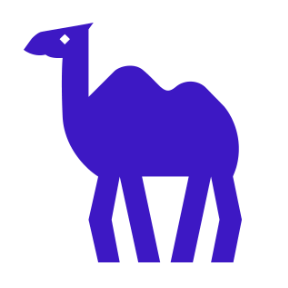 CAMEL-AI.orgVisiting Research ScientistDec 2024 - now
CAMEL-AI.orgVisiting Research ScientistDec 2024 - now -
 University of OxfordVisiting ResearcherApr 2025 - now
University of OxfordVisiting ResearcherApr 2025 - now -
Research AssociateApr 2024 - Apr 2025
-
Teaching Assistant (KRR, STR, MAT)Nov 2020 - Jun 2024
-
 University of EdinburghTeaching Assistant (Reasoning & Agents)Jan 2019 - May 2019
University of EdinburghTeaching Assistant (Reasoning & Agents)Jan 2019 - May 2019 -
Research Intern (ILCC)Jun 2018 - Aug 2018
-
Research Assistant (Business School)May 2017 - Dec 2019
Honours & Awards
-
Excellent Open-sourced Tool (DeepOnto) from OpenKG2024
-
Best Resource Paper Runner-Up at the ACM International Conference on Information and Knowledge Management (CIKM) [Certificate]2023
-
Best Resource Paper Candidate at the International Semantic Web Conference (ISWC) [Nomination]2022
-
Best Research Report Award from the International Semantic Web Summer School (ISWS) [Certificate]2022
-
PhD Scholarship from Samsung Research UK2021
-
The 2020 Joint Class Prize (Ranked Top 1) for the degree of BSc in Artificial Intelligence and Mathematics [Certificate]2020
Open-source Tools
-
Loong: An environment for verifiable synthetic long CoTs2025 - now
-
CAMEL: The first multi-agent framework for large language models2025 - now
-
HierarchyTransformers: Hierarchy learning for language models2024 - now
-
OAEI Bio-ML: A resource benchmark for ontology alignment systems2022 - now
-
DeepOnto: A package for ontology engineering with deep learning2021 - now
Professional Services
-
Organiser & Chair: OAEI Bio-ML Track (ISWC), ELMKE Workshop (EKAW, ESWC)
-
Program Committee Member: CIKM, AAAI, ISWC, ESWC
-
Conference Reviewer: ICML, ICLR, NeurIPS, ARR (ACL, EMNLP, NAACL, etc.), ECML PKDD
-
Journal Review: Journal of Bioinformatics, Journal of Biomedical Semantics, Journal of Web Semantics, Semantic Web Journal, Data Mining and Knowledge Discovery
Supervision
-
Yujia Gu - MSc. in Computer Engineering - Technical University of Munich2024 - 2025
-
Bingjie Hong - MSc. in Computer Science - University of Manchester2024
Selected Publications (view all )
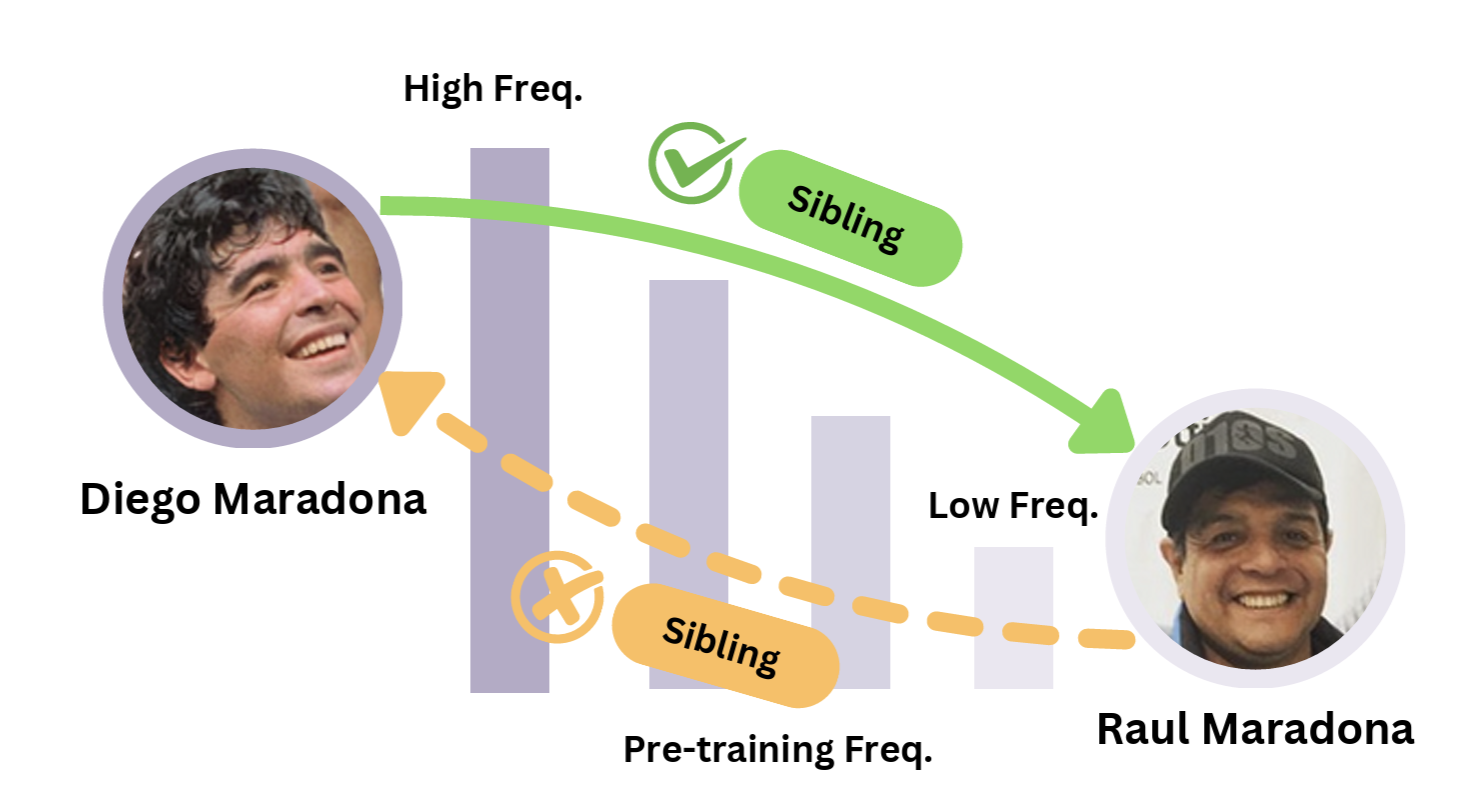
Supposedly Equivalent Facts That Aren’t? Entity Frequency in Pre-training Induces Asymmetry in LLMs
Yuan He*, Bailan He*, Zifeng Ding*, Alisia Maria Lupidi, Yuqicheng Zhu, Shuo Chen, Caiqi Zhang, Jiaoyan Chen, Yunpu Ma, Volker Tresp, Ian Horrocks
Arxiv 2025
TL;DR: This work demonstrates that the asymmetry in how large language models recognise equivalent facts stems from inherent biases in their pre-training data, particularly through differences in entity frequency.
Abstract: Understanding and mitigating hallucinations in Large Language Models (LLMs) is crucial for ensuring reliable content generation. While previous research has primarily focused on "when" LLMs hallucinate, our work explains "why" and directly links model behaviour to the pre-training data that forms their prior knowledge. Specifically, we demonstrate that an asymmetry exists in the recognition of logically equivalent facts, which can be attributed to frequency discrepancies of entities appearing as subjects versus objects. Given that most pre-training datasets are inaccessible, we leverage the fully open-source OLMo series by indexing its Dolma dataset to estimate entity frequencies. Using relational facts (represented as triples) from Wikidata5M, we construct probing datasets to isolate this effect. Our experiments reveal that facts with a high-frequency subject and a low-frequency object are better recognised than their inverse, despite their logical equivalence. The pattern reverses in low-to-high frequency settings, and no statistically significant asymmetry emerges when both entities are high-frequency. These findings highlight the influential role of pre-training data in shaping model predictions and provide insights for inferring the characteristics of pre-training data in closed or partially closed LLMs.

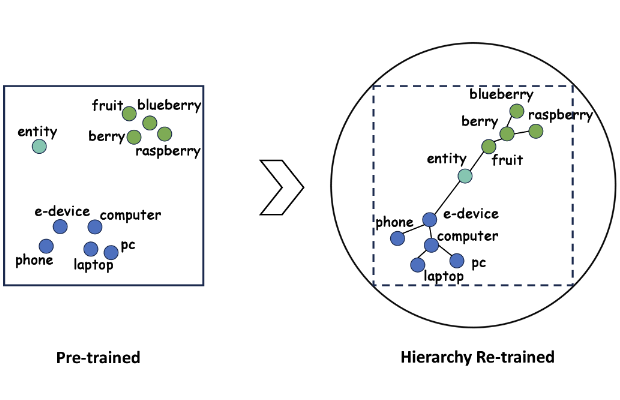
Language Models as Hierarchy Encoders
Yuan He, Zhangdie Yuan, Jiaoyan Chen, Ian Horrocks
NeurIPS 2024
TL;DR: We introduce a novel approach to re-train transformer encoder-based language models as Hierarchy Transformer encoders (HiTs), leveraging the expansive nature of hyperbolic psace.
Abstract: Interpreting hierarchical structures latent in language is a key limitation of current language models (LMs). While previous research has implicitly leveraged these hierarchies to enhance LMs, approaches for their explicit encoding are yet to be explored. To address this, we introduce a novel approach to re-train transformer encoder-based LMs as Hierarchy Transformer encoders (HiTs), harnessing the expansive nature of hyperbolic space. Our method situates the output embedding space of pre-trained LMs within a Poincaré ball with a curvature that adapts to the embedding dimension, followed by training on hyperbolic clustering and centripetal losses. These losses are designed to effectively cluster related entities (input as texts) and organise them hierarchically. We evaluate HiTs against pre-trained LMs, standard fine-tuned LMs, and several hyperbolic embedding baselines, focusing on their capabilities in simulating transitive inference, predicting subsumptions, and transferring knowledge across hierarchies. The results demonstrate that HiTs consistently outperform all baselines in these tasks, underscoring the effectiveness and transferability of our re-trained hierarchy encoders.

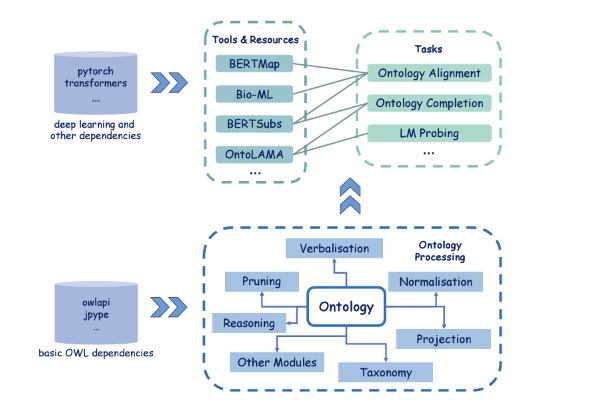
DeepOnto: A Package for Ontology Engineering with Deep Learning
Yuan He, Jiaoyan Chen, Hang Dong, Ian Horrocks, Carlo Allocca, Taehun Kim, Brahmananda Sapkota
Semantic Web 2024
TL;DR: A Python package for ontology engineering with deep learning and language models.
Abstract: Integrating deep learning techniques, particularly language models (LMs), with knowledge representation techniques like ontologies has raised widespread attention, urging the need of a platform that supports both paradigms. Although packages such as OWL API and Jena offer robust support for basic ontology processing features, they lack the capability to transform various types of information within ontologies into formats suitable for downstream deep learning-based applications. Moreover, widely-used ontology APIs are primarily Java-based while deep learning frameworks like PyTorch and Tensorflow are mainly for Python programming. To address the needs, we present DeepOnto, a Python package designed for ontology engineering with deep learning. The package encompasses a core ontology processing module founded on the widely-recognised and reliable OWL API, encapsulating its fundamental features in a more "Pythonic" manner and extending its capabilities to incorporate other essential components including reasoning, verbalisation, normalisation, taxonomy, projection, and more. Building on this module, DeepOnto offers a suite of tools, resources, and algorithms that support various ontology engineering tasks, such as ontology alignment and completion, by harnessing deep learning methods, primarily pre-trained LMs. In this paper, we also demonstrate the practical utility of DeepOnto through two use-cases: the Digital Health Coaching in Samsung Research UK and the Bio-ML track of the Ontology Alignment Evaluation Initiative (OAEI).

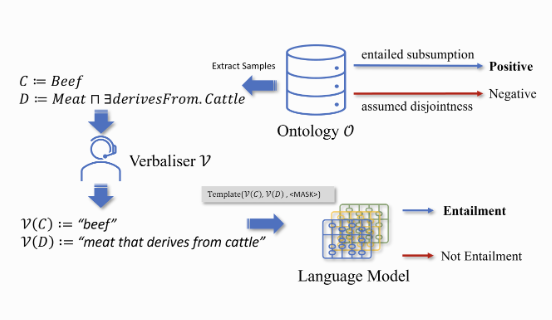
Language Model Analysis for Ontology Subsumption Inference
Yuan He, Jiaoyan Chen, Ernesto Jiménez-Ruiz, Hang Dong, Ian Horrocks
ACL (Findings) 2023
TL;DR: Probing the conceptual (ontological) knowledge in pre-trained language models.
Abstract: Investigating whether pre-trained language models (LMs) can function as knowledge bases (KBs) has raised wide research interests recently. However, existing works focus on simple, triple-based, relational KBs, but omit more sophisticated, logic-based, conceptualised KBs such as OWL ontologies. To investigate an LM's knowledge of ontologies, we propose OntoLAMA, a set of inference-based probing tasks and datasets from ontology subsumption axioms involving both atomic and complex concepts. We conduct extensive experiments on ontologies of different domains and scales, and our results demonstrate that LMs encode relatively less background knowledge of Subsumption Inference (SI) than traditional Natural Language Inference (NLI) but can improve on SI significantly when a small number of samples are given. We will open-source our code and datasets.

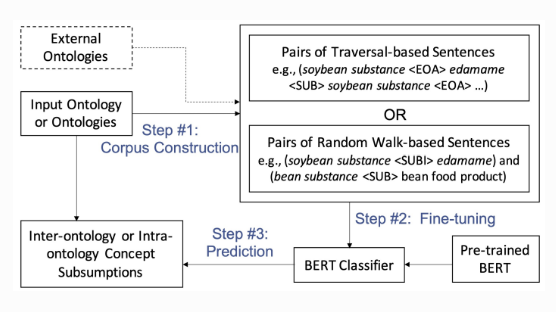
Contextual Semantic Embeddings for Ontology Subsumption Prediction
Jiaoyan Chen, Yuan He, Ernesto Jiménez-Ruiz, Hang Dong, Ian Horrocks
World Wide Web 2023
TL;DR: Fine-tuning BERT for ontology subsumption prediction.
Abstract: Automating ontology construction and curation is an important but challenging task in knowledge engineering and artificial intelligence. Prediction by machine learning techniques such as contextual semantic embedding is a promising direction, but the relevant research is still preliminary especially for expressive ontologies in Web Ontology Language (OWL). In this paper, we present a new subsumption prediction method named BERTSubs for classes of OWL ontology. It exploits the pre-trained language model BERT to compute contextual embeddings of a class, where customized templates are proposed to incorporate the class context (e.g., neighbouring classes) and the logical existential restriction. BERTSubs is able to predict multiple kinds of subsumers including named classes from the same ontology or another ontology, and existential restrictions from the same ontology. Extensive evaluation on five real-world ontologies for three different subsumption tasks has shown the effectiveness of the templates and that BERTSubs can dramatically outperform the baselines that use (literal-aware) knowledge graph embeddings, non-contextual word embeddings and the state-of-the-art OWL ontology embeddings.

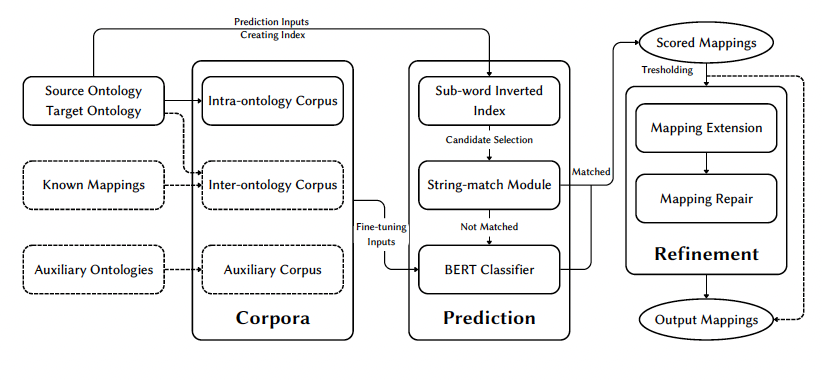
BERTMap: A BERT-based Ontology Alignment System
Yuan He, Jiaoyan Chen, Denvar Antonyrajah, Ian Horrocks
AAAI 2022
TL;DR: We introduce BERTMap, a pipeline ontology alignment system that leverages textual information from input ontologies to fine-tune BERT for lexical matching, structural and logical information to further refine the output mappings.
Abstract: Ontology alignment (a.k.a ontology matching (OM)) plays a critical role in knowledge integration. Owing to the success of machine learning in many domains, it has been applied in OM. However, the existing methods, which often adopt ad-hoc feature engineering or non-contextual word embeddings, have not yet outperformed rule-based systems especially in an unsupervised setting. In this paper, we propose a novel OM system named BERTMap which can support both unsupervised and semi-supervised settings. It first predicts mappings using a classifier based on fine-tuning the contextual embedding model BERT on text semantics corpora extracted from ontologies, and then refines the mappings through extension and repair by utilizing the ontology structure and logic. Our evaluation with three alignment tasks on biomedical ontologies demonstrates that BERTMap can often perform better than the leading OM systems LogMap and AML.

All publications
Amateur
- Literature: I am an amateur writer of novels, poetry, and prose specific to Chinese literature from a very young age.
- Music: I am an amateur music composer (took a university-level class for composition), singer, and pianist (with an amateur level eight certificate).
- Sport: I was a member of the university badminton squad (OuBaC) at Oxford [Photo]